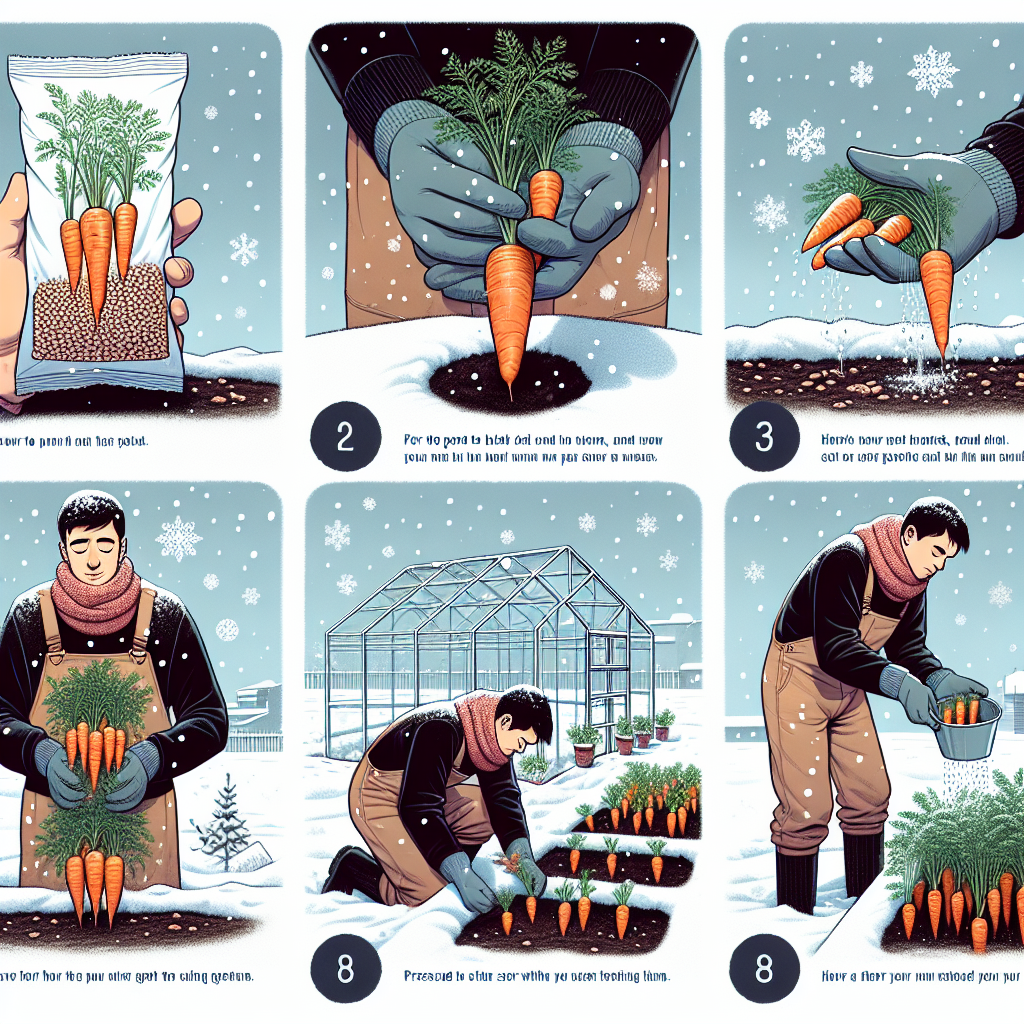
How to grow carrots in the winter
Winter Carrot Cultivation: An In-Depth Guide
If you’ve ever wondered how to enjoy fresh carrots in the chilly months, growing carrots in winter is a rewarding endeavor. While many gardening enthusiasts believe that cultivating vegetables is confined to the warmer months, winter offers a unique opportunity to grow cold-hardy crops like carrots. This guide will delve into the essentials of winter carrot cultivation, covering everything from selection and pre-planting preparations to harvesting methods. With the right knowledge, you can harvest sweet, crisp carrots even amidst the frost!
Understanding Carrots: Varieties and Characteristics
Before starting your journey on how to grow carrots in the winter, it’s essential to understand the different varieties of carrots available. Here’s a brief overview:
- Nantes: Sweet and tender with a cylindrical shape, these carrots are ideal for winter growing.
- Danvers: Known for their adaptability, Danvers carrots have a good flavor and storage qualities.
- Imperator: Long and tapered, these are less preferable in colder climates but can still be grown with care.
- Chantenay: Stout and robust, they perform well in a variety of soils and are excellent for winter harvesting.
Preparing Your Garden for Winter Carrots
Proper preparation is critical for successful winter carrot growth. Follow these steps to set the stage:
- Selecting the Right Location: Choose a sunny spot in your garden. Carrots thrive with a minimum of six hours of sunlight daily.
- Soil Preparation: Carrots prefer well-drained sandy loam soil. Amend your soil with compost to enhance drainage and nutrient availability.
- Testing pH Level: Ideal pH for carrots is between 6.0 and 6.8. Use a soil test kit to ensure the appropriate pH.
- Weed Control: Clear the area of weeds before planting, as these can compete for nutrients and moisture.
Choosing the Right Time to Plant
Timing is critical when learning how to grow carrots in the winter. Typically, you want to plant your carrot seeds about 10-12 weeks before the ground freezes. In many regions, this means planting in late summer or early fall. Keep an eye on local frost dates to optimize your planting schedule.
Planting Carrot Seeds: A Step-by-Step Approach
Once you’ve prepared your garden, it’s time to sow your seeds. Follow these instructions:
- Seed Spacing: Sow seeds about ¼ to ½ inch deep, allowing 1-2 inches between each seed.
- Row Width: Space rows approximately 12-18 inches apart for optimal growth and maintenance.
- Watering: Gently water the newly planted seeds, ensuring the soil remains moist but not waterlogged.
Winter Care for Carrot Plants
Once your carrot seeds have germinated, which typically takes 14-20 days, proper winter care becomes crucial:
- Mulching: Apply a thick layer of organic mulch (straw or leaves) around your plants to protect them from frost and retain moisture.
- Watering: During mild spells, check the moisture levels. Water as needed, especially if there’s a lack of precipitation.
- Fertilizing: A light application of nitrogen-rich fertilizer can promote healthy growth but be cautious not to over-fertilize.
Dealing with Pests and Diseases
While carrots are relatively resilient, they can still fall prey to certain pests and diseases during winter. Here’s how to keep them safe:
- Carrot Flies: Use row covers to deter these pests from accessing your crops.
- Fungal Diseases: To prevent diseases, ensure good air circulation around your carrot plants and avoid overwatering.
- Monitoring: Regularly check your plants for any signs of distress or pest activity.
Harvesting Your Winter Carrots
After nurturing your carrots through the winter months, it’s finally time to harvest! Depending on the variety and your local climate, carrots can typically be harvested from late winter to early spring. Here’s a quick guide on how to do it:
- Timing: Carrots are best harvested after a frost, which enhances their sweetness.
- Gentle Digging: Use a garden fork or spade to carefully loosen the soil around the carrots before pulling them out.
- Cleaning: Shake off excess soil but avoid washing them until you’re ready to eat, as this can lead to spoilage.
Storing Your Winter Carrots
To enjoy your carrots throughout the winter months, proper storage techniques are essential:
- In the Refrigerator: Store unwashed carrots in plastic bags in the crisper drawer to maintain their freshness.
- Cellar Storage: If you have a root cellar, place carrots in a container of damp sand or sawdust to keep them crisp.
- Freezing: For long-term storage, blanch and freeze your carrots. This method locks in flavor and nutrients.
Conclusion: The Joy of Winter Gardening
Growing carrots in the winter may seem daunting, but with the right techniques and care, it can be a fruitful venture. The sweet reward of biting into a crisp, freshly harvested carrot in the depths of winter makes all the effort worthwhile. Whether you’re a seasoned gardener or a beginner, winter carrot cultivation provides an enriching experience and a delicious addition to your winter meals. With this guide in hand, you’re ready to start planting, growing, and enjoying the fruits (or in this case, vegetables) of your labor!
“Winter gardening is not merely a test of patience; it’s a cultivation of resilience.”
Embrace the winter gardening challenges and make the most of your growing season!
By Guest, Published on August 7th, 2024